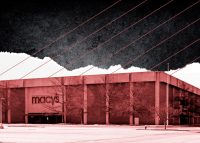The value of America’s luxury malls is roughly half what it was in 2016, a worrying sign for an industry that has long considered such malls to be safer than lower-tier alternatives.
A-rated malls, which generate an average of $750 in sales per square foot, made a strong comeback after the last financial crisis, according to CNBC. But a new report from Green Street estimates that the value of such malls has fallen about 45 percent since 2016 levels.
Read more


One reason for the decline is the flagging fortunes of department stores, which traditionally brought a lot of customers into malls. More recently, the pandemic led to temporary closures and a shift away from in-person shopping.
“A mall is a fragile ecosystem,” Green Street said. “When conditions deteriorate markedly, a mall can enter a ‘death spiral’ — where the lower sales productivity leads to falling occupancy, which results in fewer visitors attracted to a diminishing group of retailers, which continues the cycle of decreasing sales and occupancy.”
“This vicious cycle can continue until the mall becomes obsolete.”
CNBC noted that shares in the country’s biggest mall owner, Simon Property Group, fell 32 percent last year. The company owns a large number of the country’s roughly 1,000 Class A malls.
However, Green Street reserved its biggest concerns for B- and C-rated malls, which it predicted will need to be repurposed in the next few years.
[CNBC] — Sylvia Varnham O’Regan
